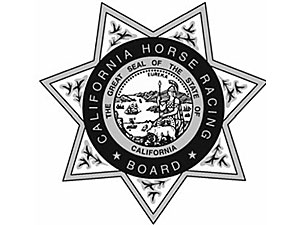Rodenticide Linked to Six Sudden Horse Deaths

California racing officials have identified a connection in the sudden death of six horses with trace amounts of anticoagulant rodenticide in their systems, the state horse racing board was told Dec. 18.
Dr. Rick Arthur, California Horse Racing Board equine medical director, said the horses, who died between Dec. 21, 2012, and Sept. 18 of this year, all expired due to internal bleeding following exercise. Necropsy exams found each had only trace amounts of a strongly toxic anticoagulant used in the extermination of rodents at racetracks in their systems.
Arthur said the level of toxicity found in these cases was so low it would not have been enough to kill the horses, but in combination with exercise he believes the poison proved fatal.
The same rodenticide was found in one of the seven horses trained by Bob Baffert that died suddenly following strenuous exercise at Hollywood Park between late 2011 and 2013.
"The Baffert case has changed the way we look at sudden death," Arthur told the CHRB, which met Thursday at Los Alamitos Race Course. "Since then we've had seven cases in which horses have died that had trace levels of anticoagulant rodenticide in their livers."
Four of the horses were Thoroughbreds in training, while two others were stable ponies.
Jeff Salmon, a staff member with the CHRB's track safety program, working in conjunction with safety stewards at Santa Anita Park, Del Mar, Golden Gate Fields, Los Alamitos, and Cal Expo, began an investigation in October.
He told the board that necropsy tests were conducted on 24 other horses that had been euthanized due to catastrophic leg injuries during the period, and none showed signs of anticoagulant rodenticide, or AR.
Santa Anita, Del Mar, and Golden Gate Fields all have vendors assigned to handle pest control problems, Salmon said.
But he noted that rodent control is such an issue on the backside of racetracks that vendors acknowledged that their bait stations are sometimes looted. Salmon said that suggests unauthorized barn personnel distribute the poison in areas prone to horse traffic, and he said he was able to verify that upon inspection.
"I've surveyed the Internet and you can find very large quantities of bait available and order it directly," Salmon said. "That's the most probable source of anticoagulant rodenticide's unauthorized use."
Salmon noted that the rodenticide remains in a horse's system for a long period of time, from four to 12 months. Necropsy exams found that 10-15 liters of blood had been found in the abdominal cavities of the deceased horses.
But because of the prevalence of rodents, it is impractical to ban the use of AR, the most effective means of eradication, he said.
"We need to talk to every training operation in California and absolutely convince them that eliminating rodents is not their responsibility," Salmon said. "I think we need to get out there, talk to everybody, and get them out of the business of worrying about this."
Rick Baedeker, CHRB executive director, said in addition to education, a rule with "some teeth in it" needs to be passed to discourage the so-called "freelancing" by stable personnel.
"We solve the problem (now) and in two years we're right back where we started," he said.
Salmon said there was no evidence that some other source, such as imported feed, could be at fault in the horses' death. He also said there was no reason to believe anticoagulant rodent bait would be used to enhance racing performance through blood thinning.
Arthur said an alternative to AR is needed, but none that is as effective has yet been found.
One possibility suggested at the meeting to cut down on the rodent population is to begin rotating horses out of individual barns over several months so that that each barn can be treated directly.
"It's possible we've lost some very valuable horses and could lose more," said commissioner Bo Derek, who heads the CHRB's track safety and medication committee. "We need to hear from experts on alternatives. I would like to see a ban on these (AR) products."
Chairman Chuck Winner referred the matter to Derek's committee for further study.
In other action, the board approved a request from Los Alamitos Race Course and the Pacific Coast Quarter Horse Racing Association to suspend the use of clenbuterol for Quarter Horses for 2015 due to misuse of the bronchodilator drug. Clenbuterol has been proven to contain anabolic properties and is often used for muscle building.
Arthur said there were 13 clenbuterol violations last year at Los Alamitos.
